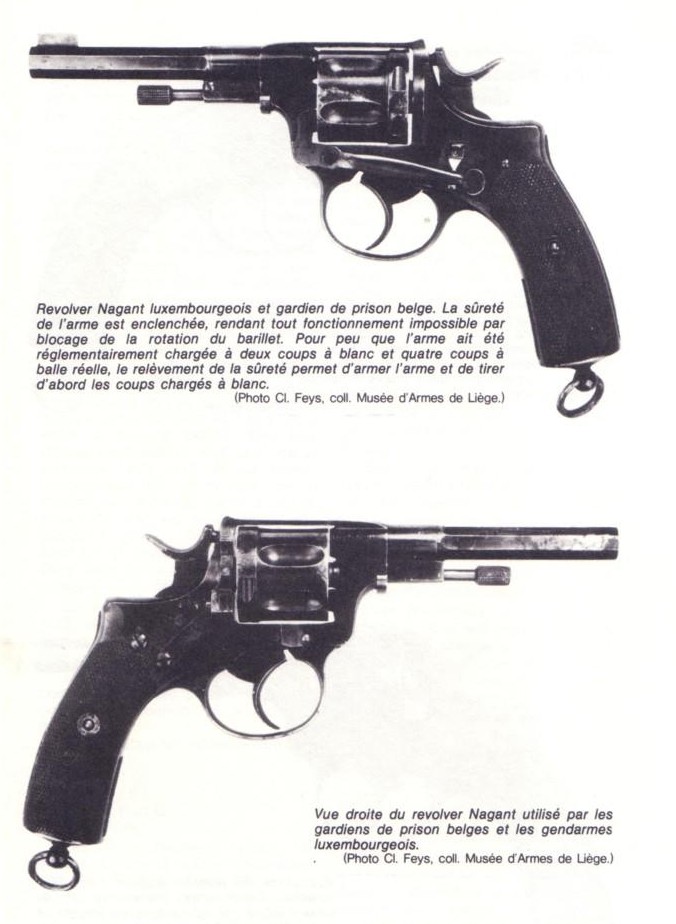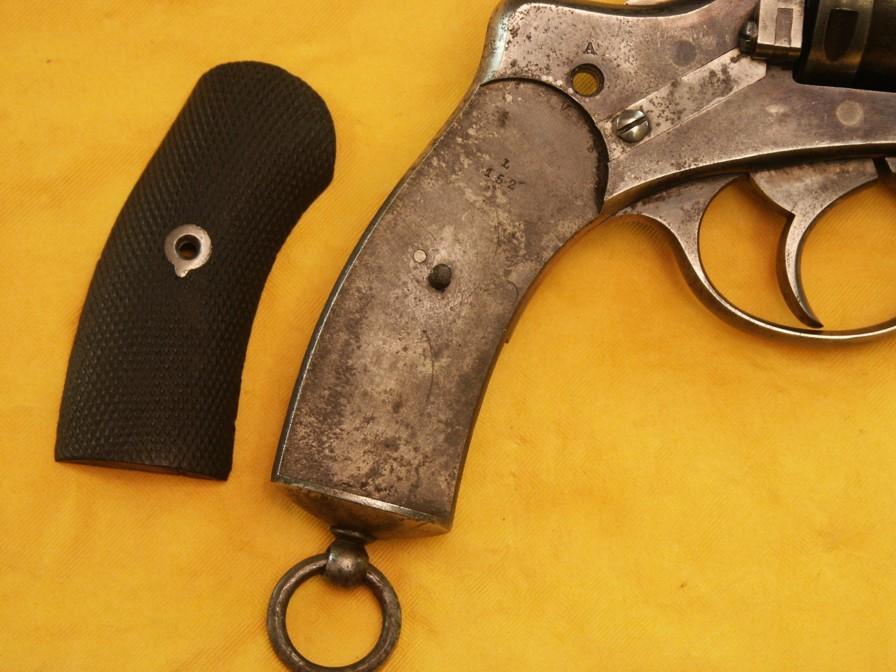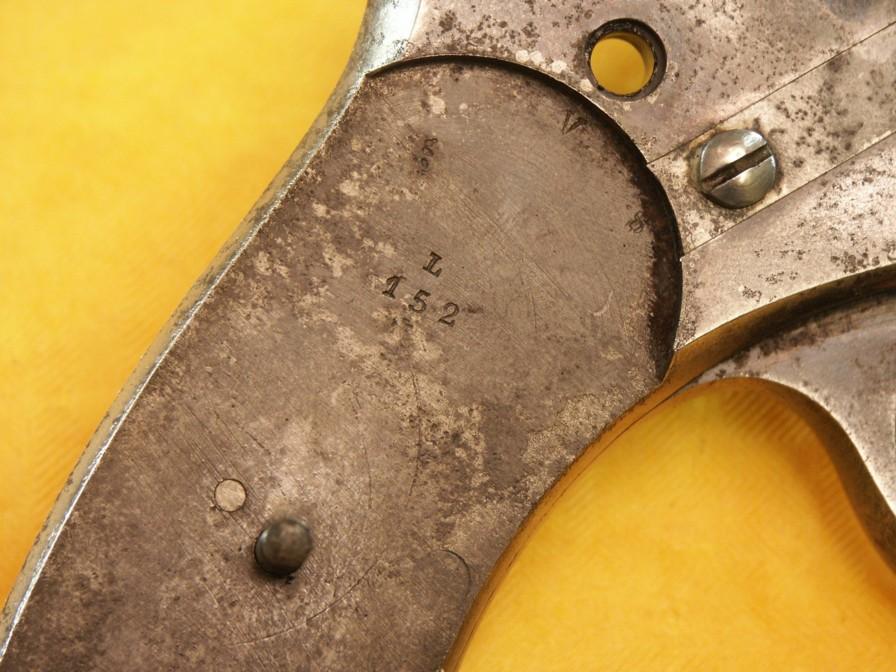Some of the most beautiful work of this craftsman, and many others, are in this book “Liège Gunmakers through their Work. 1800 - 1950”.
For more detail see: LIEGE GUNMAKERS
The NAGANT of Luxembourg Gendarmerie
The weapon
It is about a revolver NAGANT model 1884 known as “of Luxembourg Gendarmerie”.
The calibre of 9,4mm is in conformity with the calibre of the basic weapon.
The weapon measures 285 mm and the barrel 160mm.
It is round with the thunder for becomes hexagonal to the mouth.
The more elaborate handlebar allows the best aimed.
Its lock is with simple and double action of the type 1878/86.
The cylinder with 6 shots is without grooves of the type 1883.
The parts of the lock are marked of A to E in the order of disassembling/reassembly.
The stick consists of two plates out of wooden of drowning squared, maintained by a screw and two rivet washers with only one ear!
It ends in a metal cap, a ring with its screw-pivot.
The loading by side door is traditional just as unloading by rod with milled cylindrical end.
When it is new, its completion was black and bluish.
This weapon was envisaged with a bayonet of130 mm to cruciform profile. It is designed to be fixed in front of the barrel by means of an adapter fixed using a screw passing behind the front sight. The bayonets and the adapters carried the same numbers that the weapons.
Punches
The weapon carries the lawful punches of the bench of tests of Liege, namely:
N and X crowned which are the countermarks of the controllers post 1877.
Spangled ELG in an oval which is final acceptance of use of 1846 to 1893.
Markings
The weapon relates to the left side of the console the marking NAGANT PATENTS which is of course the mark of the manufacturer in Liege (see site)
L152: repeated in several places of the weapon is the serial number and the only mark indicating that it is about a Luxembourg weapon. It seems well that this marking was affixed by the manufacturer and not by the Luxembourg authority.
These weapons remained in service until 1903 and were replaced by a pistol of the FN.
In 1927, 37 of these revolvers provided with the adapter of bayonet making office with protects front sight were given in service to the assembled section of the Gendarmerie.
These weapons were seized by the German occupying army in 1940.
GG


